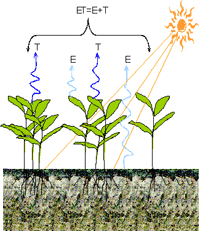Agricultural Research Division of IANR

West Central Research and Extension Center, North Platte
Date of this Version
7-28-2023
Citation
Translational Animal Science, 2023, 7, txad092. https://doi.org/10.1093/tas/txad092
Abstract
The objective of this study was to compare the influence of beef production systems using additive combinations of growth-promotant technologies on meat quality. Steer calves (n = 120) were assigned to 1 of 4 treatments: 1) no technology (NT; control), 2) antibiotic treated (ANT; NT plus therapeutic antibiotics, monensin, and tylosin), 3) implant treated (IMP; ANT plus a series of three implants), and 4) beta-agonist treated (BA; IMP plus ractopamine-HCl). Muscle biopsy samples from the longissimus lumborum were extracted from a subset (n = 4 per treatment) of steers to evaluate expression of calpain-1, calpain-2, and calpastatin using real-time RT-PCR. Following carcass chilling, objective color (L*, a*, and b*) was evaluated. The right strip loin was removed from each carcass, portioned into 2.54-cm steaks, and designated to 7, 14, or 21 d postmortem aging periods for analysis of cook loss and Warner–Bratzler shear force (WBSF). The anterior face of each strip loin was used for analysis of crude fat and moisture. Treatment influenced (P < 0.001) L*, a*, and b*. The NT and IMP treatments had greater (P < 0.01) L* values, ANT was intermediate, and BA had the lowest (P < 0.01) L* values. The NT and IMP treatments had higher (P < 0.01) a* and b* values compared with ANT, which were higher (P < 0.01) than BA. Steaks from implanted steers (IMP and BA) tended (P ≤ 0.067) to exhibit higher a* and b* than steaks from nonimplanted steers. Cattle in the NT and ANT treatments produced steaks with increased (P < 0.01) crude fat percentage compared with the IMP and BA treatments, which were similar (P > 0.05). Percent moisture of NT steaks was lower (P < 0.01) than all other treatments, ANT was intermediate, and IMP and BA were similar (P > 0.05) and had the highest (P < 0.01) moisture content. Cook loss tended to be greater (P = 0.088) for implanted steers (IMP and BA) compared to nonimplanted steers (NT and ANT). Steaks from NT and ANT treatments were more tender (P < 0.05) than IMP and BA, which were similar (P > 0.05). Thus, WBSF was lower (P < 0.001) in nonimplanted than implanted steaks. Expression of calpastatin was increased (P ≤ 0.025) in ANT and BA treatments, and there was a tendency for expression of calpain-2 to be increased (P = 0.081) in ANT compared to NT. These results suggest that production systems with limited use of growth promoting technology produced strip loins with more crude fat, less moisture and cook loss, and improved tenderness.


Comments
Open access.